Research Center for High Efficiency Hydrogen Engines & Engine Tribology (HEET)
KEYWORD
- Internal combustion engine
- Fuel
- Hydrogen
- E-fuel
- Combustion
- Thermal efficiency
- Cooling loss
- Friction loss
- Emissions
- Coating
- Diamond-like carbon (DLC)
- Friction
- Wear
- Friction-based power generation
- Particle method
- Smoothed-particle hydrodynamics
(SPH)
- ●Research on highly efficient hydrogen engines for carbon neutral vehicles/research for reducing friction and heat losses
- At HEET, we are working to improve engine thermal efficiency and achieve zero emissions. For hydrogen engines, we are researching high thermal efficiency and low NOx emissions using our unique direct-injection combustion method. Research on reducing heat loss is also under way aimed at using hydrogen, ammonia, and synthetic fuels. In the areas of friction, wear, and lubrication, we are researching and building analytical models to reduce friction on pistons and crank bearings as well as for achieving low oil consumption and low oil evaporation.
We have world-class research capabilities in measurement technologies for engines and machine components, and are involved in many joint industry-academia research projects both domestically and internationally.
- ●Contributing to research and development of next-generation zero-emissions engines through advanced experimental and analytical research capabilities
- A floating liner piston friction measurement engine and an instantaneous heat flux measurement system utilizing thin film technology, which were designed and developed at Tokyo City University (TCU), have been implemented by many companies. Thin film sensor technology is also being increasingly adopted in technology industries other than for engines to verify high-precision analysis models in the field of tribology, and is becoming a core technology in the development of next-generation engines as well as in research and development work on new industrial equipment.
- ●A research center for carbon-free/carbon-neutral power sources aimed at 2050
- In recent years, the Research Center has been promoting industry-academia-government collaborative projects as a basis for research on improving the thermal efficiency of existing engines, which has been an issue lately. These projects also involve research on what is needed for next-generation power sources, including hydrogen engines, synthetic fuels, and ammonia fuels, with a view to achieving a sustainable society.
In addition to internal combustion engines, the Research Center is also actively engaged in advanced tribology research. This includes the development of self-powered triboelectric sensors for monitoring the lubrication state of sliding bearings, research into three-dimensional plasma deposition of DLC films to achieve high durability for three-dimensional machine components, research into the creation of friction interfaces that exhibit stable super-lubricity in air, and the development of ultra-liquid repellent sliding bearings to obtain ultra-low friction in oil-lubricated environments.
Research staff
Director, Professor
Internal combustion engines, heat engineering, tribology

Professor
Plasma coating, Surface modification, Triboelectic Nanogenerator

Associate Professor
Hydrogen engines, internal combustion engines, tribology

Visiting Professor
Tribology, internal combustion engines

Visiting Professor
Hidemi Ogihara
Internal combustion engines, lubrication, friction, tribology

Visiting Associate Professor
Computer simulation, Tribology, Coarse-grained modeling

Visiting Research Fellow
Motohiko Koushima
Tribology, Test Machine Design, Mechanical Property of Materials

Research programs
Hydrogen combustion research
- ●Research on highly efficient zero-emissions hydrogen engines with improved thermal efficiency and reduced NOx emissions
- ●Elemental research into low-pressure injection and combustion technology for direct-injection hydrogen engines
- ●Research on hydrogen injectors for internal combustion engines
- ●Research into improving thermal efficiency, environmental performance and other technical issues of hydrogen engines for construction machinery application
- ●Effects of injection characteristics and combustion chamber shape of direct-injection hydrogen engines on in-cylinder air column vibration and hydrogen concentration in blow-by gas
- ●Effects of condensed water from combustion gas and blow-by gas in hydrogen engines on lubricating oil, friction, and wear
Reducing heat loss and cooling loss
- ●Research on combustion and cooling loss reduction in combustion chambers with a heat insulation surface structure
- ●Development of a full-film multipoint temperature sensor that measures instantaneous heat flux and a heat flux sensor compatible with high cylinder pressure
Research on lubricating oil consumption/dilution and on next-generation lubricants
- ●Visualization and predictive model construction of fuel and oil behavior effected by post injection using the photochromism method
- ●Visualization of oil film and analysis model construction and verification using the photochromism method to elucidate oil consumption mechanisms
- ●Tribology research using environmentally friendly sugar alcohol lubricants for gear units
- ●Research on friction loss reduction and mechanism elucidation in internal combustion engines and mechanical sliding parts using ultra-fine bubbles
Measuring equipment for friction, wear, and seizure
- ●Basic research on friction, wear, and seizure characteristics using an engine bearing test rig
- ●Development of a method for measuring instantaneous friction force during engine operation using a floating liner engine
Surface coatings/thin film sensors
- ●Research on ultra-low friction surfaces using DLC coatings
- ●Demonstrative research on the effect of a surface with oil repellent properties on friction reduction in plain bearings
- ●Development of a method for measuring physical quantities of sliding parts of mechanical elements using thin film pressure, temperature, strain, and distance sensors
Analysis models
- ●Reaction model of boundary lubrication friction based on the SPH method
- ●SPH simulation of shear friction considering wear, heat generation, and plasticity
Unique experimental and production equipment used in research and development activities at TCU
- ●Plume Ignition Combustion Concept, direct-injection research engine, hydrogen spray and combustion visualization engine, high-pressure hydrogen injector
->For combustion research on high-efficiency, zero-emissions hydrogen internal combustion engines - ●Premixed hydrogen engine, forced cooling system for hydrogen engines
->For investigating the influence of condensed water produced by hydrogen combustion - ●Floating liner engine for measuring piston system friction force
- ●Engine bearing test rig (evaluation equipment specified by the International Organization for Standardization (ISO))
- ●Sapphire cylinder liner engine for visualizing oil film behavior between the piston and cylinder
- ●Device for observing wear debris in engine oil
- ●Sputtering equipment with special rotation mechanism
->For fabricating thin film sensors, thin film thermocouples, and full film heat flux sensors - ●Plasma-based ion implantation and film deposition (PBII) equipment
->For the production of super liquid-repellent surfaces
Examples of research engines and experimental results on condensed water and additive deterioration due to hydrogen combustion
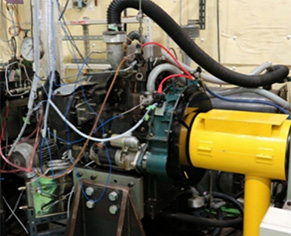
Direct-injection hydrogen engine
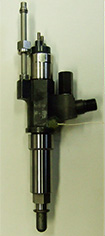
High-pressure hydrogen injector
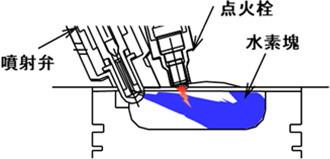
Plume ignition combustion concept with ultra-low NOx and super-high thermal efficiency of 50%
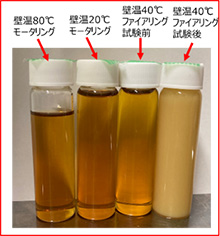
Increase in lubricating oil moisture due to hydrogen combustion
Thin film pressure sensor/Thin film full film instantaneous heat flux sensor
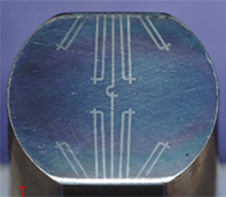
Full film heat flux sensor
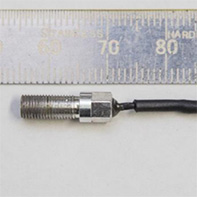
Thin film heat flux sensor for combustion chamber
(3 mm in diameter, 8 mm long)
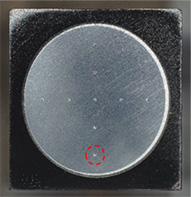
Multi-axis thin film heat flux sensor
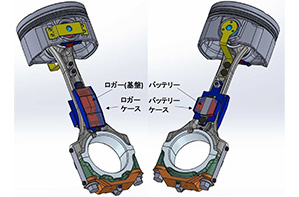
Data logger for multi-cylinder engines
Floating liner engine/Engine bearing test rig
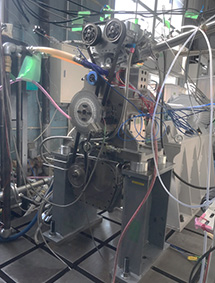
Floating liner engine for measuring piston friction
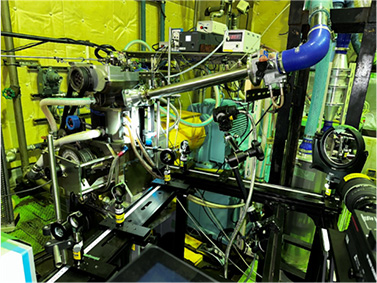
Single-cylinder bi-fuel (diesel/hydrogen) engine
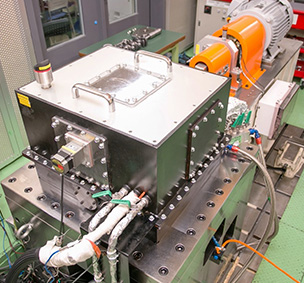
Engine bearing test rig
Thin film sensor(for sliding surfaces)
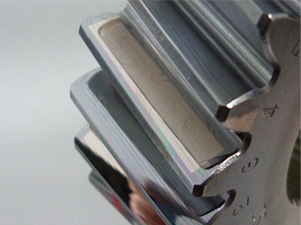
Thin film pressure sensor for gear flanks
(0.2 μm thickness)
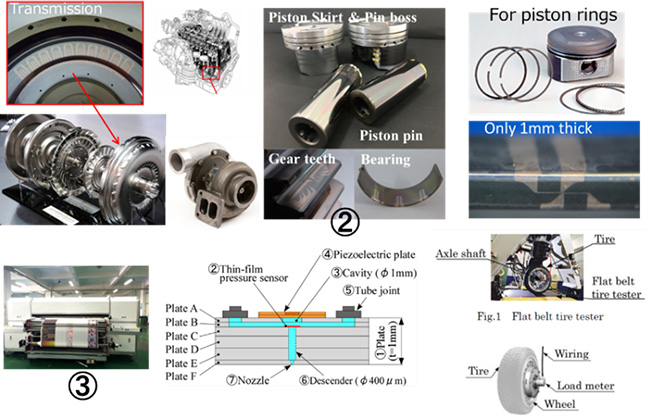
Application examples of thin film pressure sensors
Developments of functional solid surfaces by plasma surface modification/coating
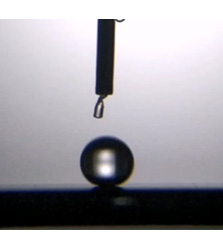
Super liquid-repellent surface
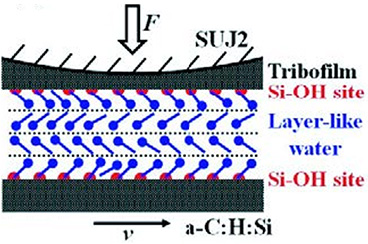
Superlubricity of surface
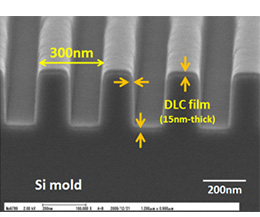
Three-dimensional DLC coating
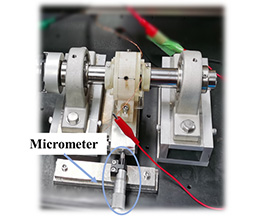
Development of triboelectric sensors

